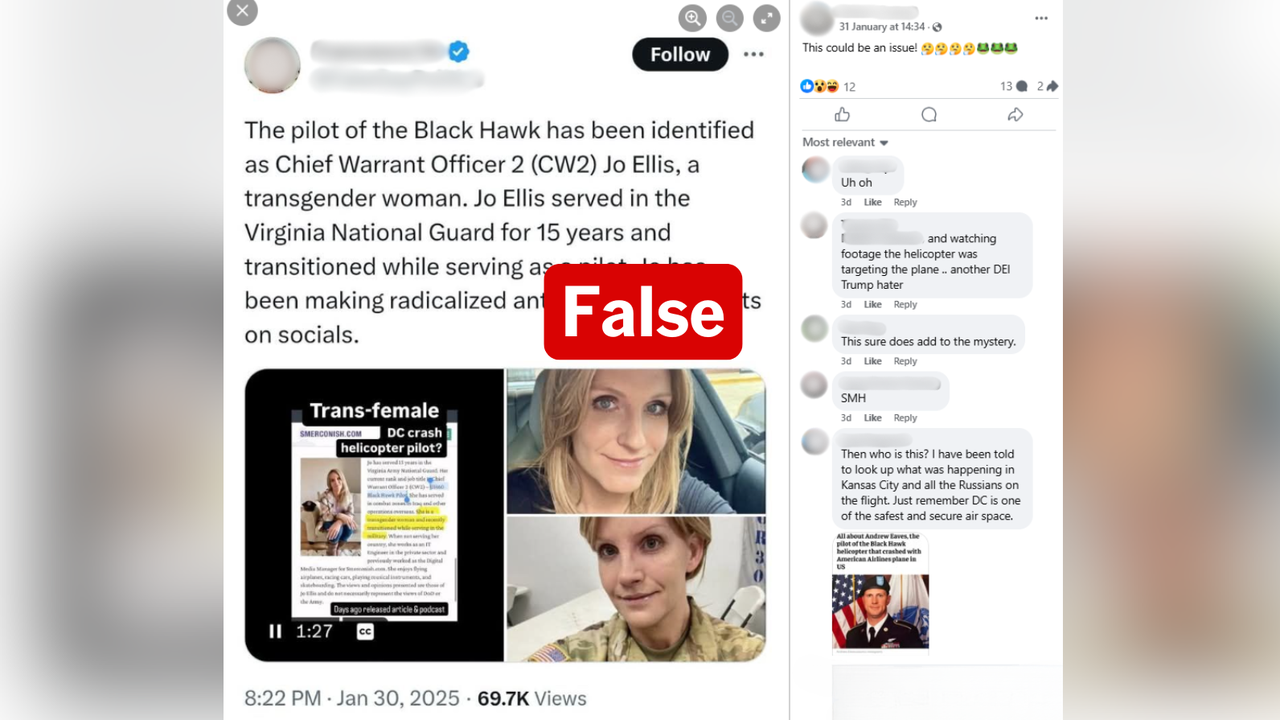WHAT WAS CLAIMED
Facebook users are sharing before-and-after photos of their dramatic weight loss transformations.
OUR VERDICT
False. The images are fake, created using AI technology and posted on hacked accounts.
AAP FACTCHECK – Dozens of Facebook users are sharing supposed before-and-after photographs of their fast and drastic weight loss transformations.
But the images are fake. Experts say they have been created using artificial intelligence (AI) technology, with telltale features including floating hair, fake shadows and malformed hands.
The posts feature on what appear to be hacked accounts.
AAP FactCheck has come across dozens of such posts with similar features and almost identical captions.
Accompanying each post are side-by-side images, the left depicting a young woman and the right depicting a supposedly slimmer version of the same woman.
"In just 30 days, my neighbors were very surprised by my changes," the caption reads. "No need for excessive exercise or strict dieting every day. Thanks to my friends' advice, this really works. I am looking forward to more significant changes!"
The posts then direct readers to click a suspicious link in the comments.
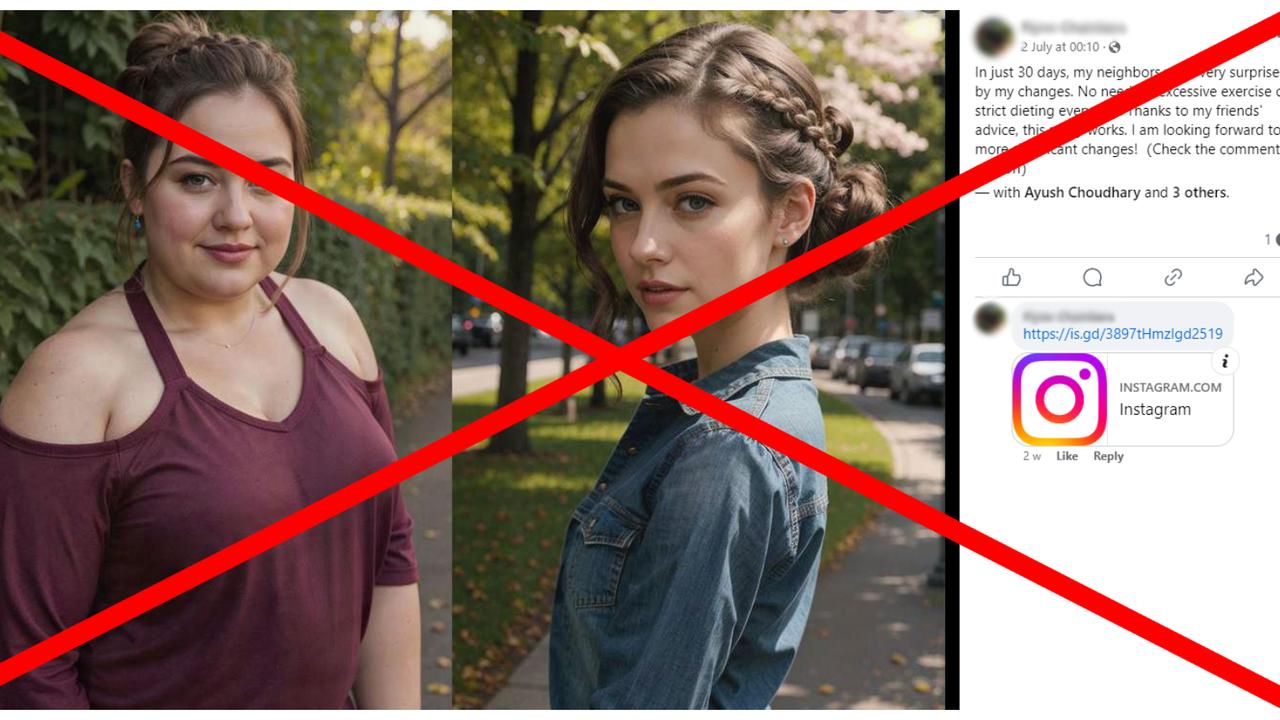
Digital media and AI experts say the posts are fake.
Jean Burgess, Professor of Digital Media at Queensland University of Technology, told AAP FactCheck that the biggest clue the posts are fake is the context of the images.
"They are showing up as posts on hacked or impersonated accounts," Prof Burgess said, "the text that accompanies them is identical, and they are being used to promote products or services of doubtful quality and trustworthiness."
In many cases, the images appear to show a completely different person to the Facebook account's profile photo, and several versions of the post – each depicting different women and all purporting to show the account-owner's weight loss transformation – have been posted by a single account.
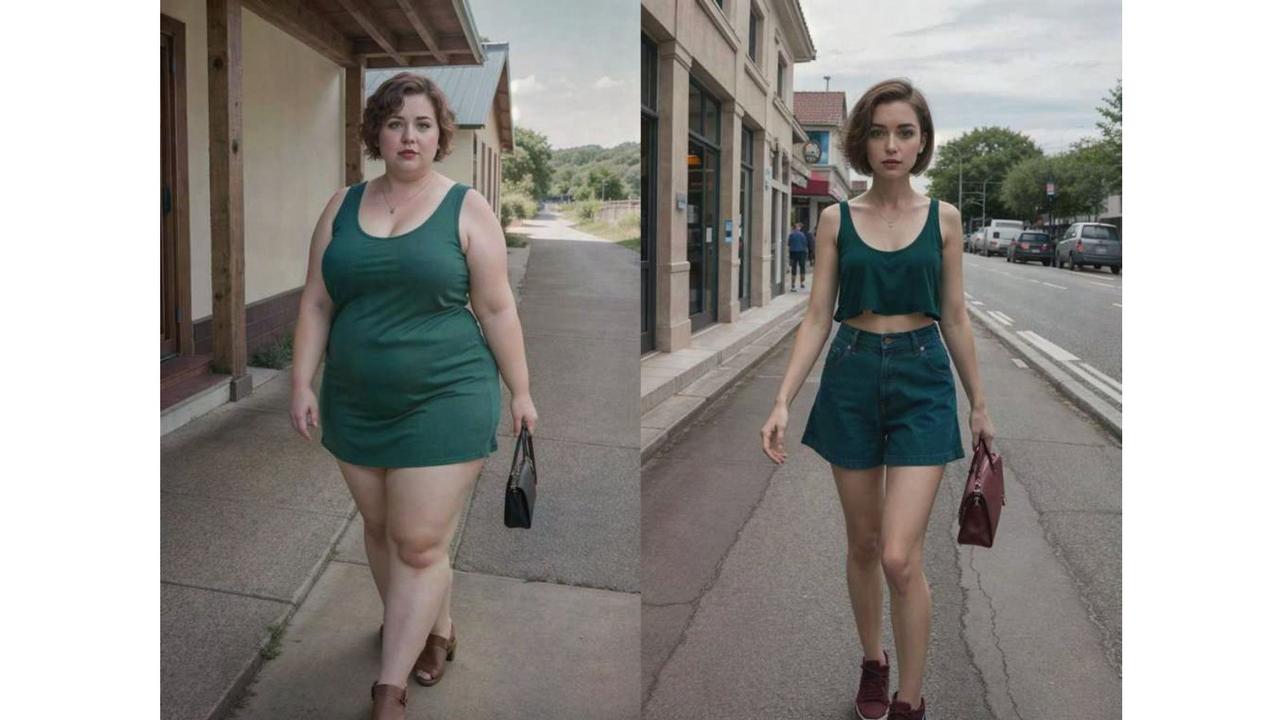
Experts told AAP FactCheck they believe the images have been created using a text-to-image tool that enables users to generate images based on descriptive prompts.
Prof Burgess explained that the "after" images on the right in each pair may have been generated using the "before" image as a seed – a preliminary image that generates another – in a tool such as Midjourney or DALL-E.
"The 'before' images look suspiciously uniform as well," Prof Burgess said, noting the pleasant lighting, outdoor settings and very generic composition.
Brendan Murphy, a lecturer in the Digital Media program at Central Queensland University, told AAP FactCheck he was certain the images are AI-generated pairs.
He explained that by using a tool like Stable Diffusion, anyone can write a descriptive prompt and set a number of other parameters to generate two similar images.
"Say I write a detailed prompt, use a specific seed and run the generation for 50 steps," Mr Murphy said. "I'd get a very specific image.
"Then say I used the same prompt and the same seed but a different number of steps. The image would not be the same, but it would be similar, and the overall geometry of the image would be the same, thanks to using the same seed."
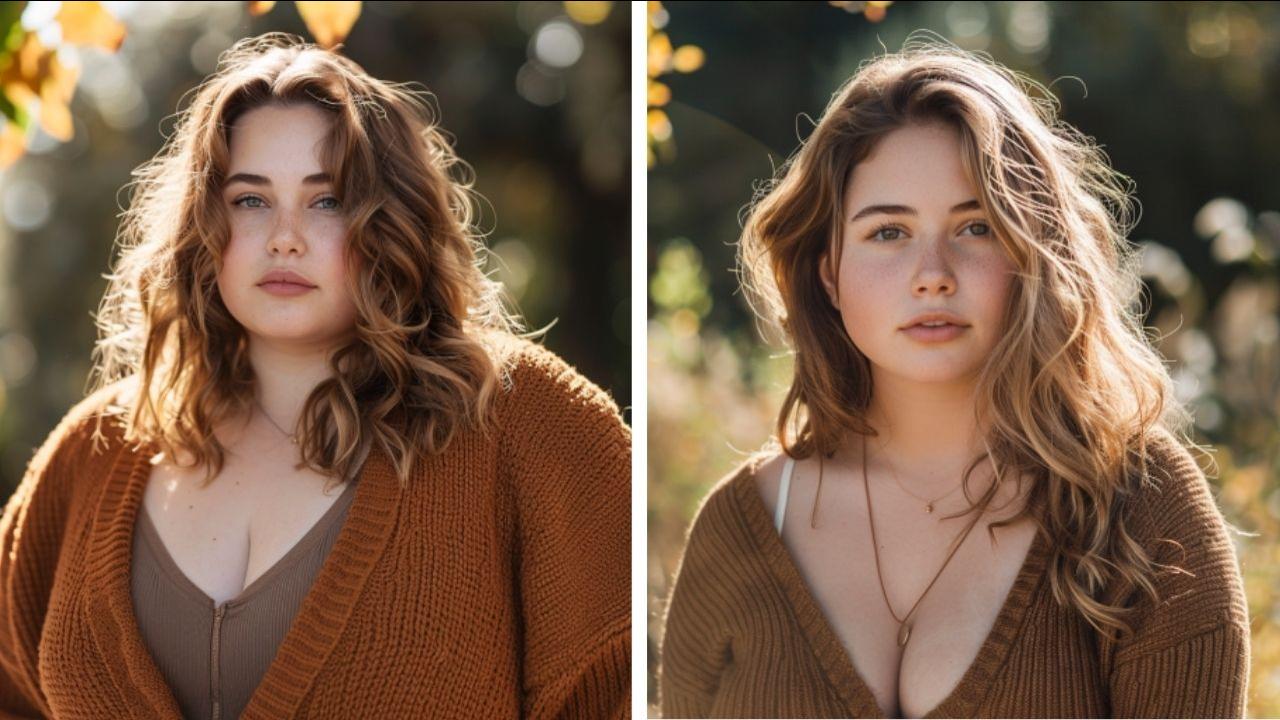
Prof Burgess conducted her own experiment using a text-to-image tool to generate a pair of images in a similar style.
To generate the first, Prof Burgess used the prompt "a relaxed outdoor photographic portrait of a plus-sized girl next door type".
She then requested a variation using the prompt "a relaxed outdoor photographic portrait of a slim girl next door type".
The before-and-after posts bear many of the hallmarks of AI-generated images, such as inaccurate shadows and warped perspectives.
Some images feature unusual or distorted clothing, while others incorporate T-shirts with gibberish slogans.
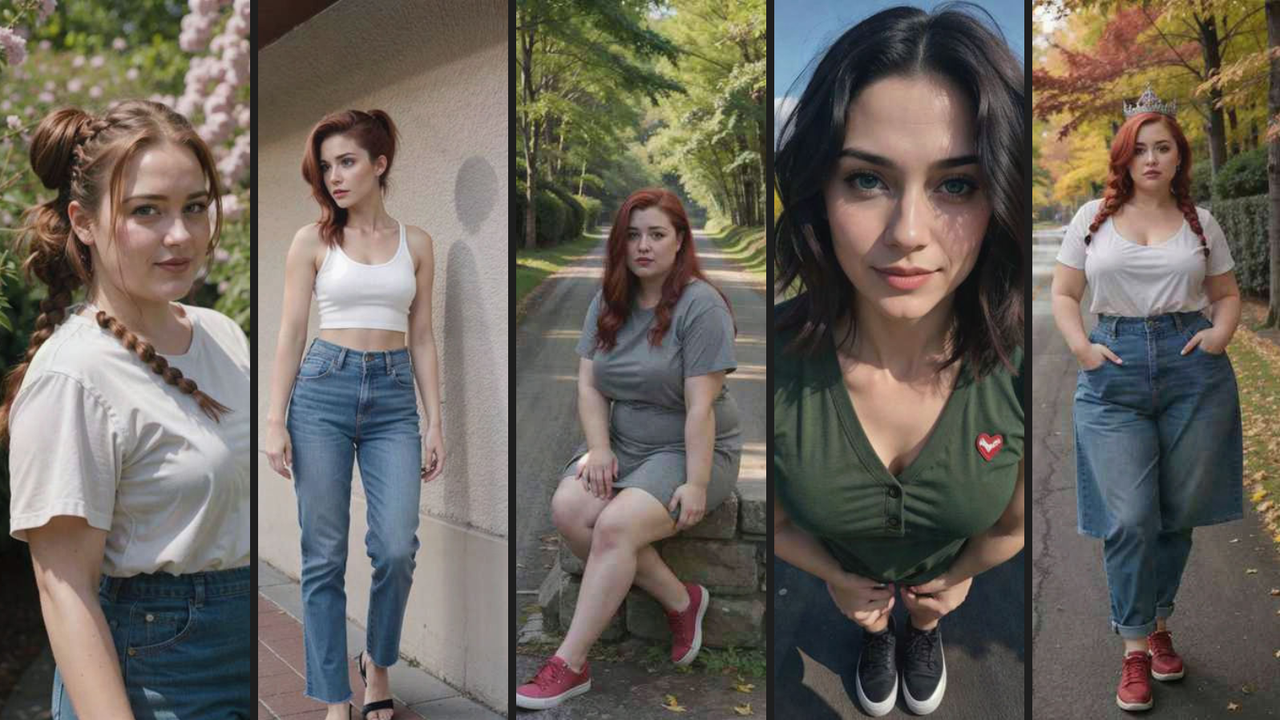
In some posts, the "before" and "after" images even appear to depict two people with different ethnic origins or different heights.
Jeannie Paterson from the University of Melbourne's Centre for AI and Digital Ethics warned AI-generated fakes are getting "better and better".
"This is why there are calls for tech companies and platforms to use watermarking or metadata clearly to identify AI images and prevent scams," Prof Paterson said.
AAP FactCheck has previously debunked Facebook posts in which users claimed fake images were genuine historical photographs or works of art.
The Verdict
False – The claim is inaccurate.
AAP FactCheck is an accredited member of the International Fact-Checking Network. To keep up with our latest fact checks, follow us on Facebook, Twitter and Instagram.






